PyTorch
Model Deployment and Inference
Deploying to Kubernetes
Kubernetes has rapidly become the de facto standard for deploying scalable, resilient applications, including machine learning (ML) models. Its robust architecture, which has scaled the internet among other applications, now plays a critical role in modern AI/ML initiatives.
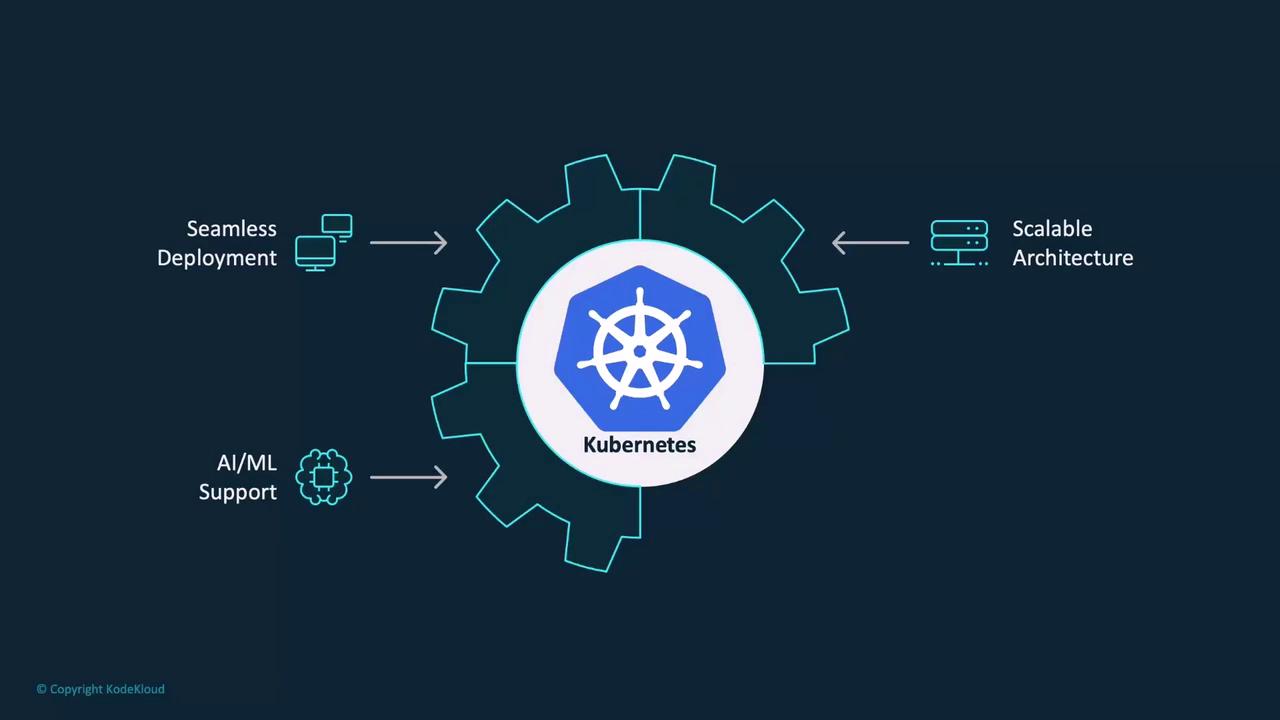
In this guide, we explore why Kubernetes is ideal for model deployment. We assume you already have a basic understanding of Kubernetes, so our focus will be on its advantages and best practices for deploying ML models rather than a comprehensive platform overview.
We'll start by discussing the key benefits of using Kubernetes for model deployment. Then, we demonstrate how to leverage Kubernetes to handle specialized workloads, outline the complete deployment workflow for ML models, share best practices, and review popular ML serving frameworks.
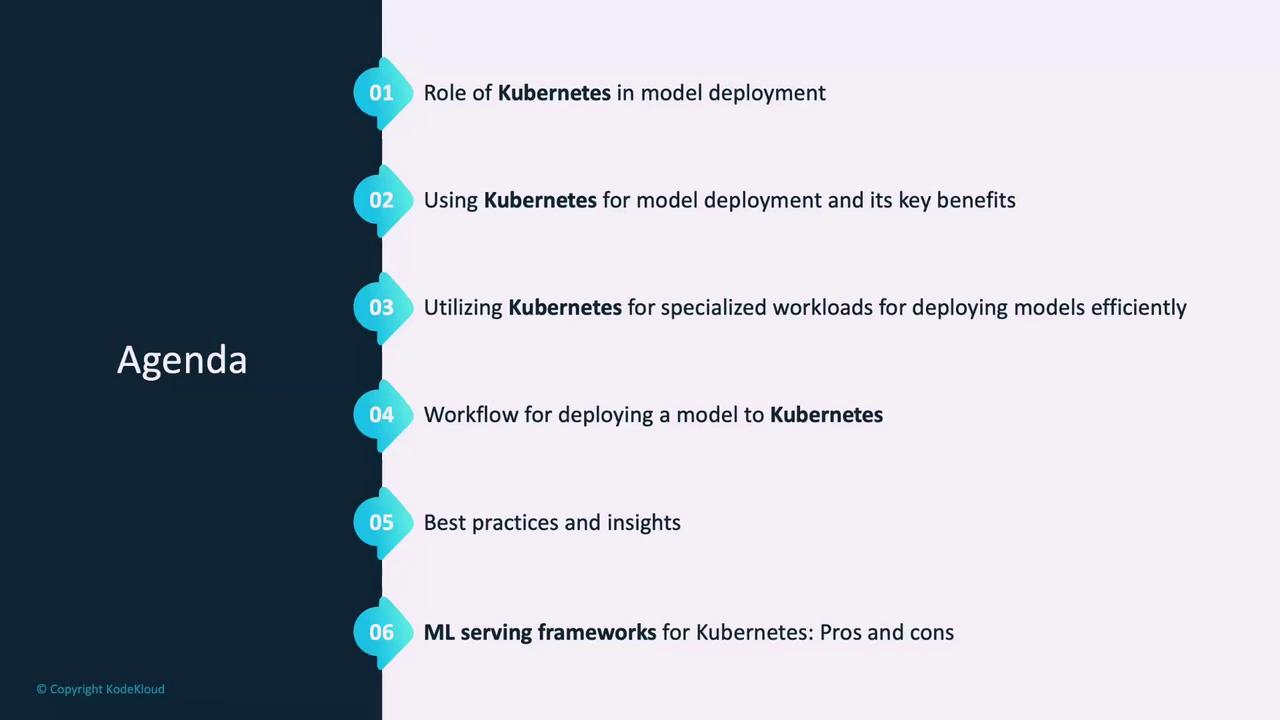
What is Kubernetes?
Kubernetes is an open-source platform for automating the deployment, scaling, and management of containerized applications.
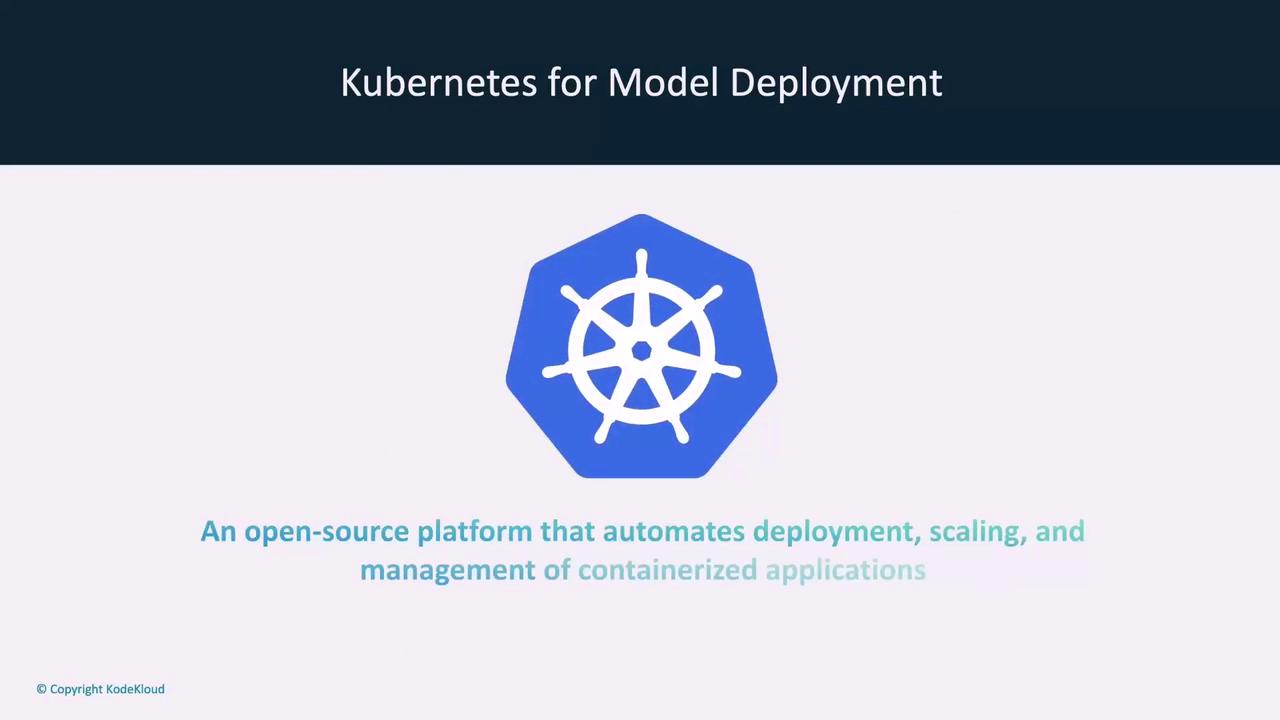
Rather than rehash its general capabilities, let’s dive into why Kubernetes is particularly well-suited for ML model deployment.
Why Use Kubernetes for Model Deployment?
Kubernetes offers several compelling benefits when deploying machine learning models:
- High-Volume Request Handling: Designed to manage a high volume of simultaneous requests, making it ideal for production environments where model traffic can fluctuate.
- Seamless Scalability: Its inherent scalability allows your application to grow without requiring extensive modifications to your deployment configuration.
- Efficient Resource Utilization: Kubernetes optimally allocates limited resources like GPUs, ensuring cost-effective operations for resource-heavy AI workloads.
- Versatile Deployment Scenarios: Whether deploying for real-time data inference or batch processing of historical data, Kubernetes adapts easily to various deployment scenarios.
- Automated Resource Management: It automates critical processes such as scaling during peak demand and adjusting resources during low-demand periods, while continuously monitoring system health for high availability and reliability.
Overall, Kubernetes streamlines the complex process of deploying and managing ML models, making it a powerful tool for modern AI applications.
Handling Specialized Workloads
ML and AI tasks often require specific hardware configurations. Kubernetes enables precise resource allocation and workload scheduling by using node affinity, node selectors, taints & tolerations, and resource requests and limits.
Node Affinity
Node affinity allows you to define which nodes should execute particular workloads. For instance, if a node is labeled with gpu=true, you can ensure that your ML tasks run specifically on these GPU-enabled nodes.

Below is an example deployment manifest that uses node affinity to target nodes labeled with gpu="true":
apiVersion: apps/v1
kind: Deployment
metadata:
name: gpu-deployment
spec:
replicas: 3
selector:
matchLabels:
app: gpu-app
template:
metadata:
labels:
app: gpu-app
spec:
containers:
- name: gpu-container
image: my-ml-model:latest
affinity:
nodeAffinity:
requiredDuringSchedulingIgnoredDuringExecution:
nodeSelectorTerms:
- matchExpressions:
- key: gpu
operator: In
values:
- "true"
Node Selector
Alternatively, you can use a node selector to ensure pods are scheduled on nodes with a specific label. Consider the following example, where pods are assigned to nodes labeled cpu=high-performance:
apiVersion: apps/v1
kind: Deployment
metadata:
name: cpu-deployment
spec:
replicas: 2
selector:
matchLabels:
app: cpu-app
template:
metadata:
labels:
app: cpu-app
spec:
nodeSelector:
cpu: "high-performance"
containers:
- name: cpu-container
image: my-cpu-intensive-app:latest
Taints and Tolerations
Taints prevent pods from being scheduled on certain nodes unless they expressly tolerate them. This is useful for dedicating nodes exclusively to ML workloads.
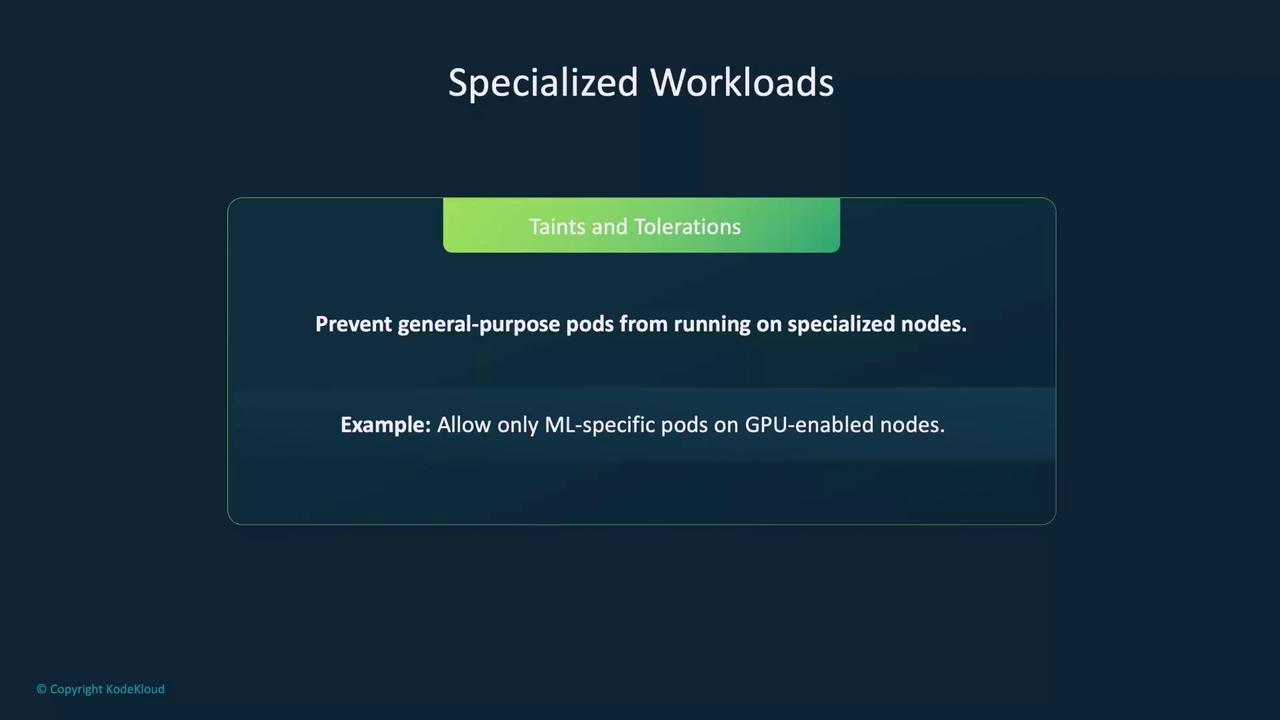
First, taint the node using the following command:
# Taint a node
kubectl taint nodes node-name gpu-only=true:NoSchedule
Then, update the deployment manifest to include the necessary toleration:
apiVersion: apps/v1
kind: Deployment
metadata:
name: gpu-tolerant-deployment
spec:
replicas: 3
selector:
matchLabels:
app: gpu-tolerant-app
template:
metadata:
labels:
app: gpu-tolerant-app
spec:
tolerations:
- key: "gpu-only"
operator: "Equal"
value: "true"
effect: "NoSchedule"
containers:
- name: gpu-container
image: my-ml-model:latest
Resource Requests and Limits
Defining resource requests and limits ensures that your ML models receive the necessary CPU, GPU, or memory while preventing competition between workloads.
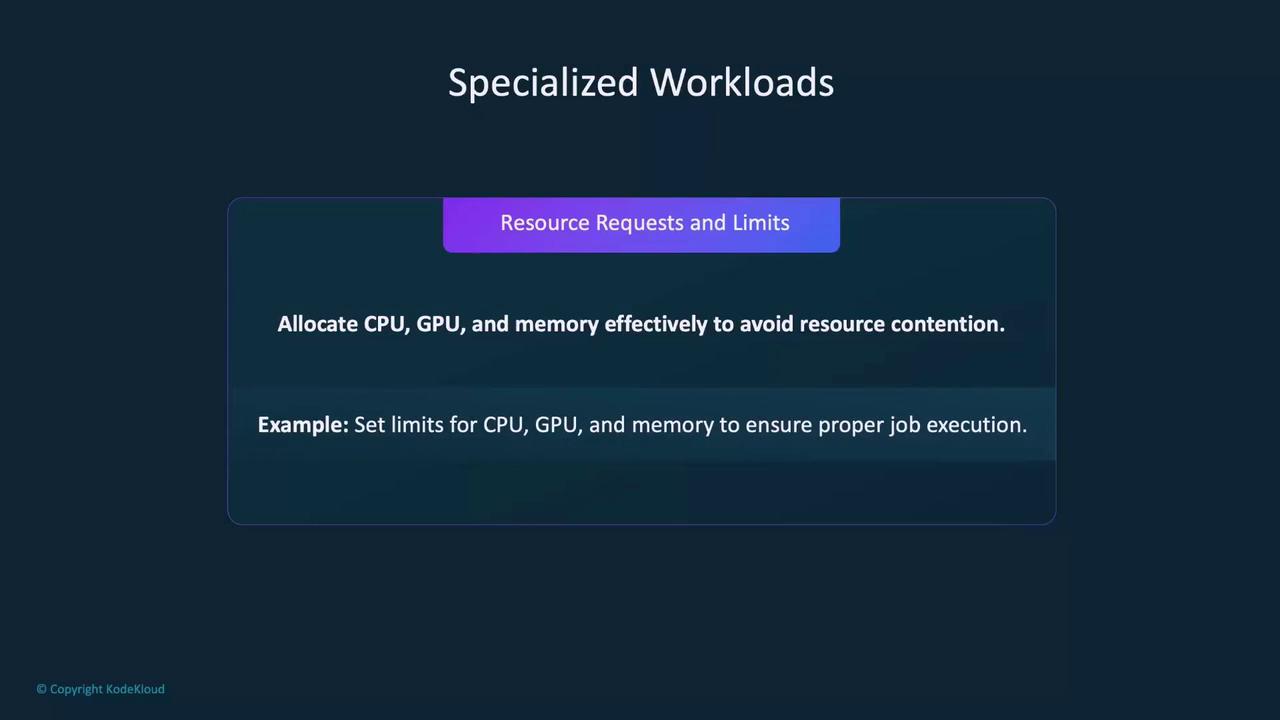
For example, if your model requires one GPU and 4GB of memory, specifying these in your YAML manifest will help ensure efficient resource allocation.
Deploying an ML Model to Kubernetes
Deploying an ML model with Kubernetes involves a series of well-defined steps:
- Containerization: Package your trained model into a container using a model serving framework. Test the container locally to ensure it functions as expected.
- Preparing Kubernetes Resources: Define your deployment, services, config maps, and secrets using YAML manifests. These configurations instruct Kubernetes on how to run and manage your model.
- Deployment: Apply the YAML files using
kubectlor integrate them into a GitOps pipeline. Verify the deployment using commands likekubectl get podsandkubectl logs. - Testing and Scaling: Use a REST client (such as Postman) to test the model endpoint. Configure an autoscaler (e.g., Horizontal Pod Autoscaler) to adjust pod counts dynamically based on traffic.
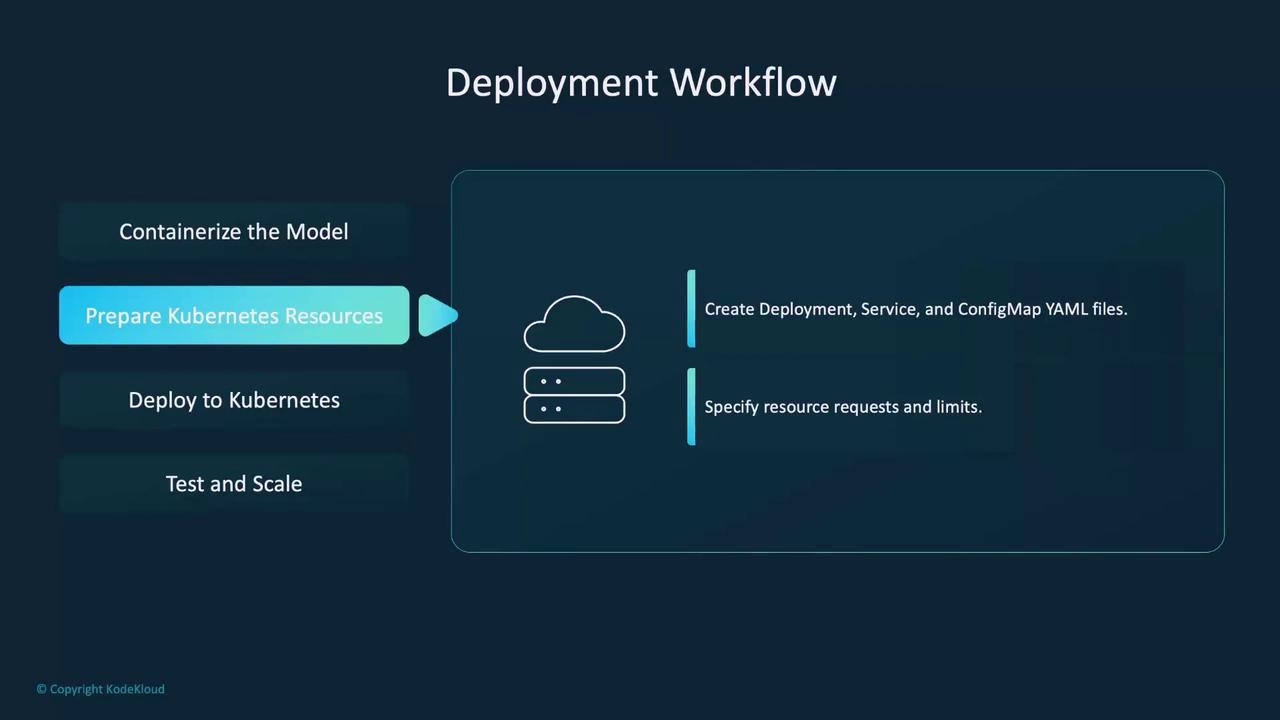
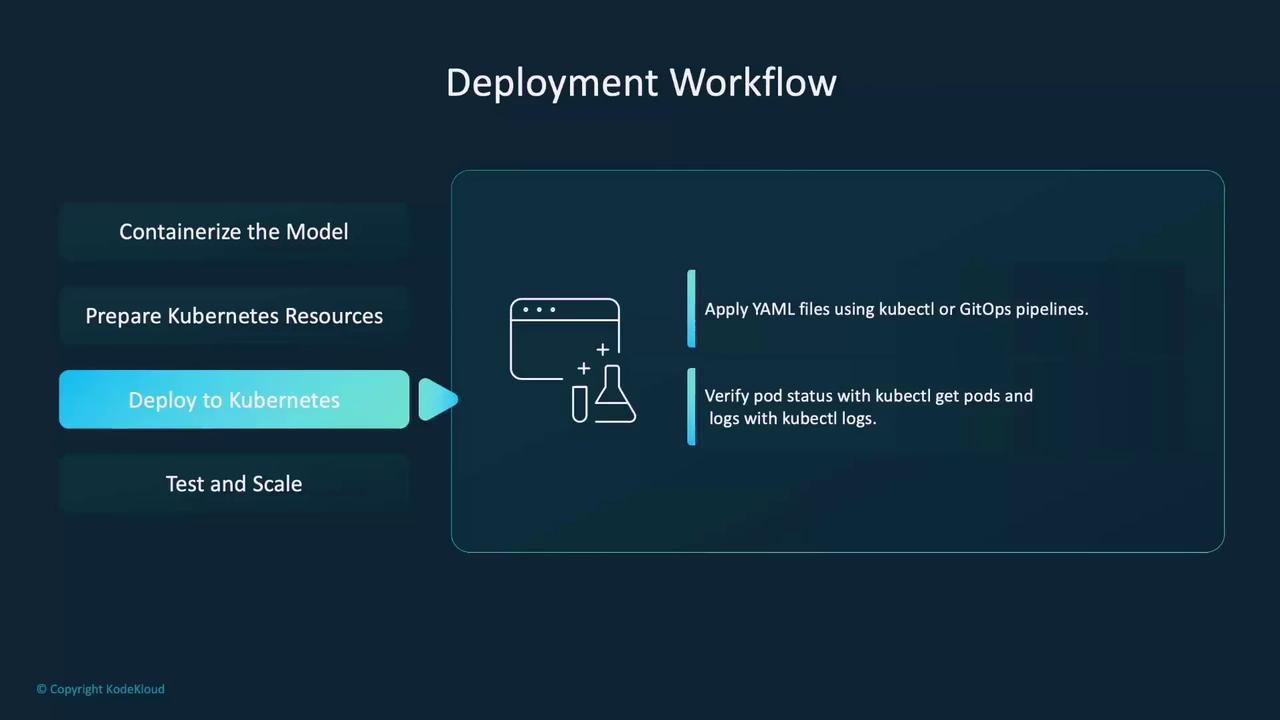
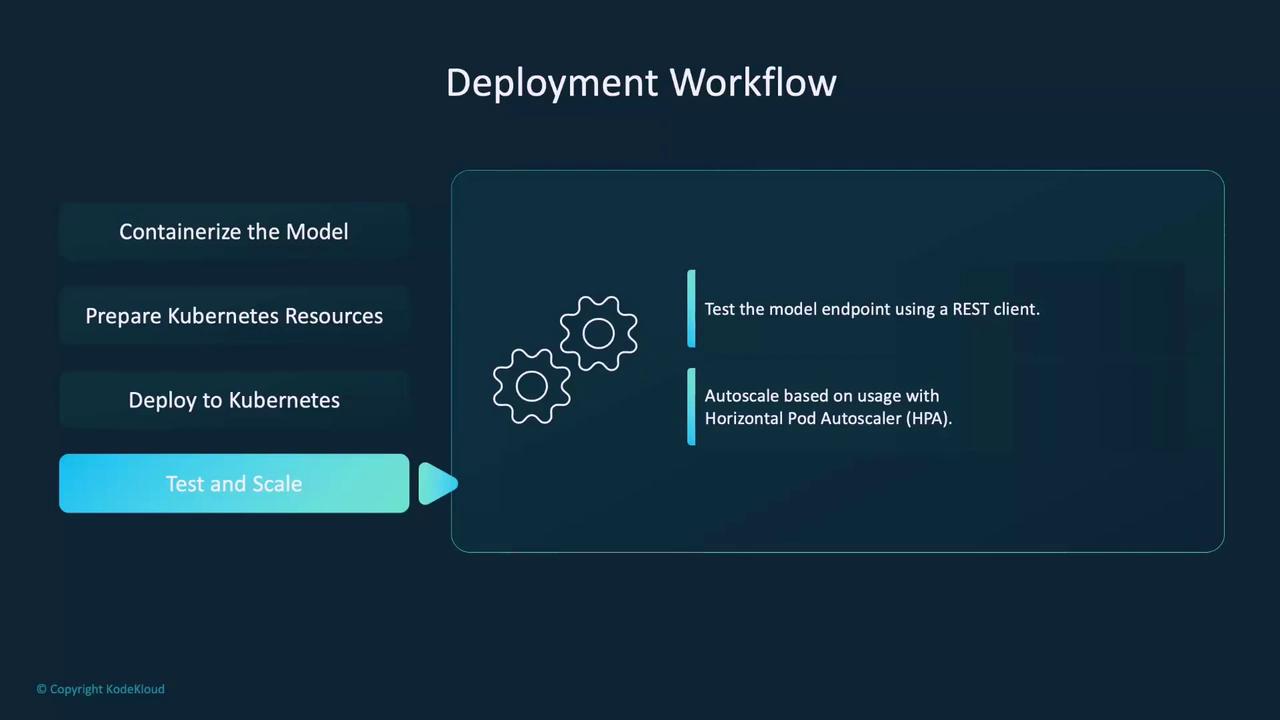
Horizontal Pod Autoscaler (HPA)
The Horizontal Pod Autoscaler (HPA) is critical for managing workload fluctuations. It automatically adjusts the number of pods based on real-time metrics such as CPU usage, memory consumption, or custom metrics, ensuring your deployment remains responsive and resource-efficient.
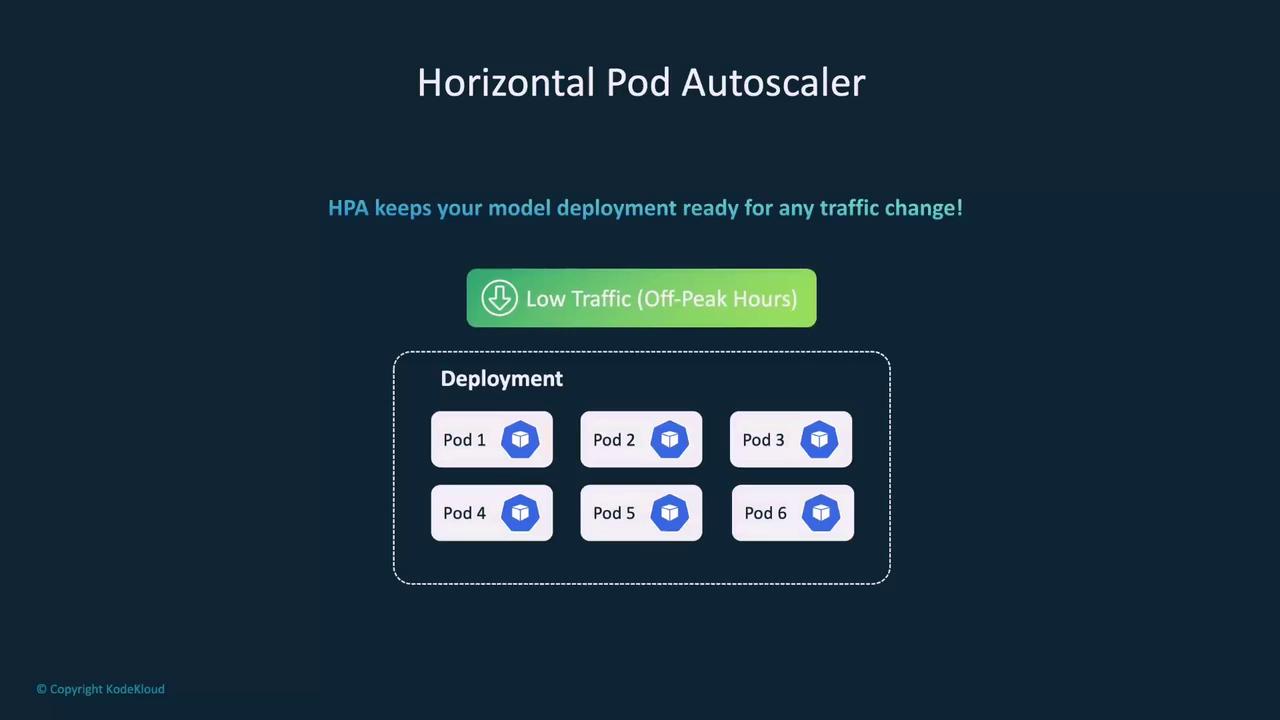
HPA dynamically scales pods based on utilization metrics. The following diagram outlines key components such as CPU utilization, memory usage, and custom application metrics that influence scaling decisions:
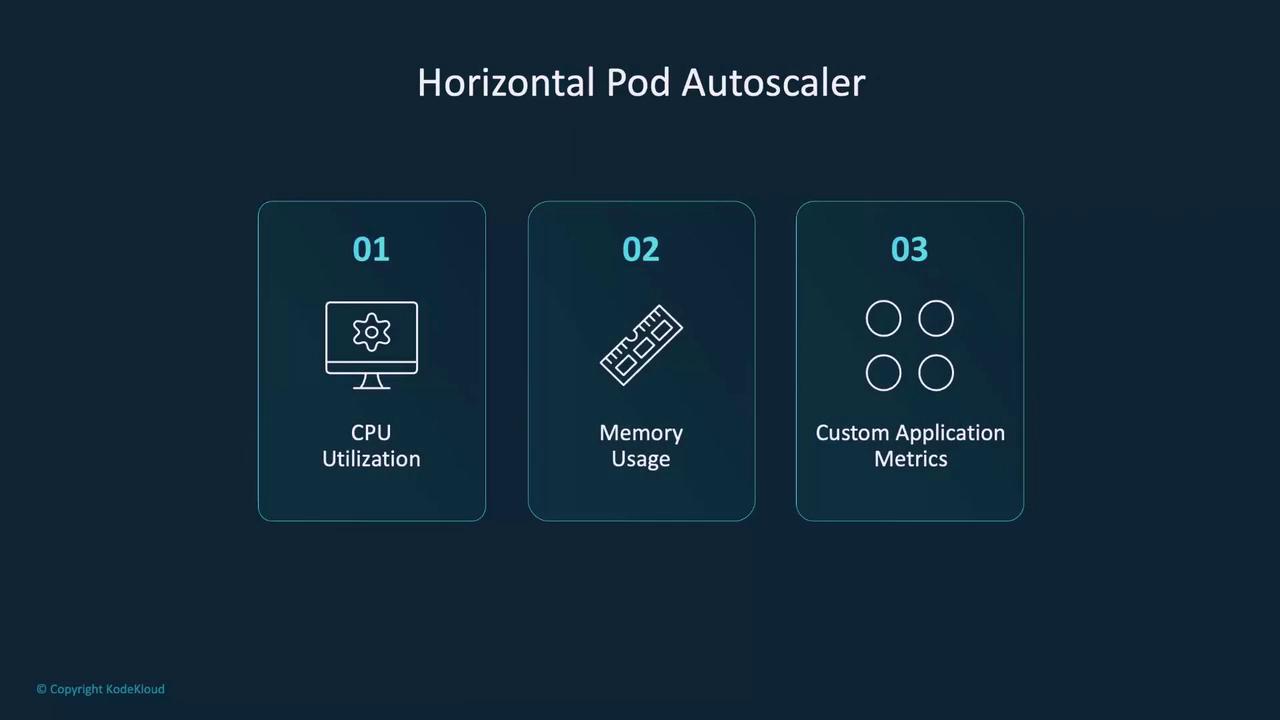
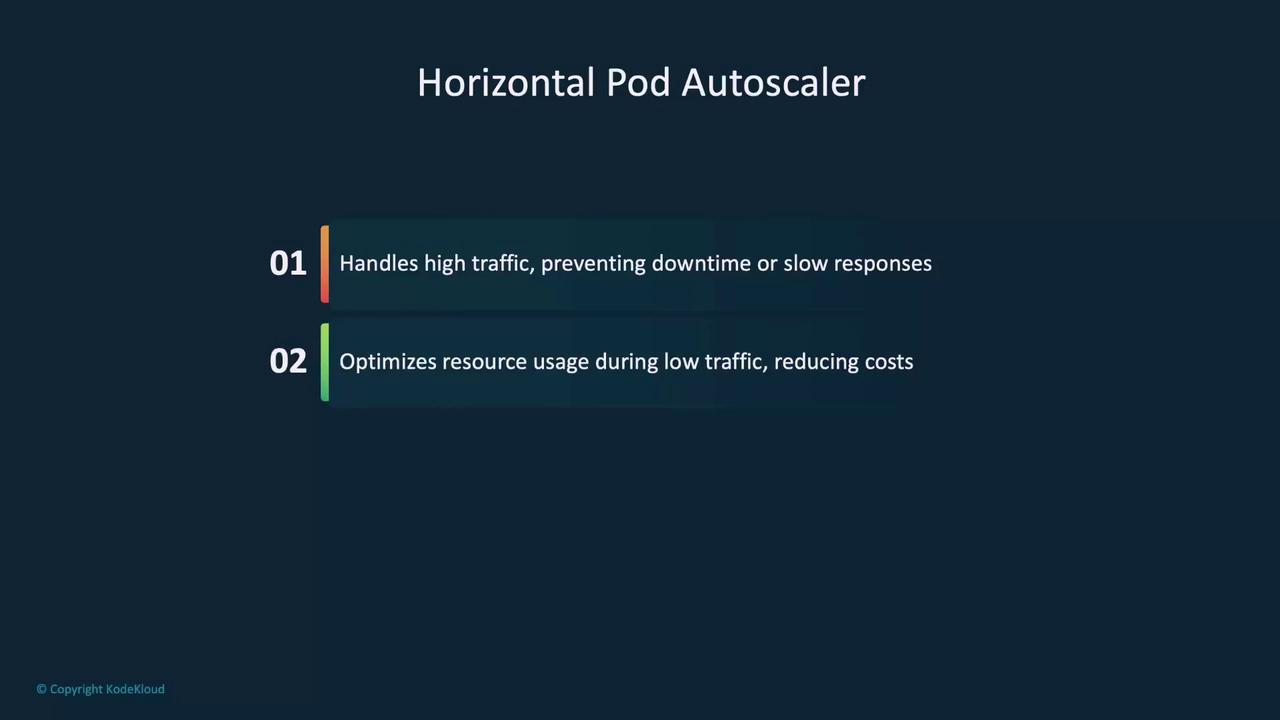
Currently, GPU metrics are not natively supported, but you can integrate custom metric systems to monitor GPU usage.
Below is an example configuration that demonstrates HPA in action. The deployment manifest sets resource requests and limits, while the HPA definition scales the deployment based on CPU utilization:
apiVersion: apps/v1
kind: Deployment
metadata:
name: ml-model-deployment
spec:
selector:
matchLabels:
app: ml-model
template:
metadata:
labels:
app: ml-model
spec:
containers:
- name: ml-model-container
image: my-ml-model:latest
resources:
requests:
cpu: "500m"
limits:
cpu: "1000m"
---
apiVersion: autoscaling/v2
kind: HorizontalPodAutoscaler
metadata:
name: ml-model-hpa
spec:
scaleTargetRef:
apiVersion: apps/v1
kind: Deployment
name: ml-model-deployment
minReplicas: 2
maxReplicas: 10
metrics:
- type: Resource
resource:
name: cpu
target:
type: Utilization
averageUtilization: 70
When the average CPU utilization exceeds 70%, HPA automatically scales out up to 10 replicas. Conversely, if the utilization drops, the deployment scales back down to a minimum of 2 replicas, ensuring that your application adapts to traffic changes seamlessly.
Best Practices for Deploying ML Models on Kubernetes
Adopting best practices is crucial for robust and efficient ML model deployments:
Container Optimization:
Use lightweight, optimized containers such as slim Docker images that include only the necessary files and dependencies. This practice speeds up deployments and reduces resource overhead.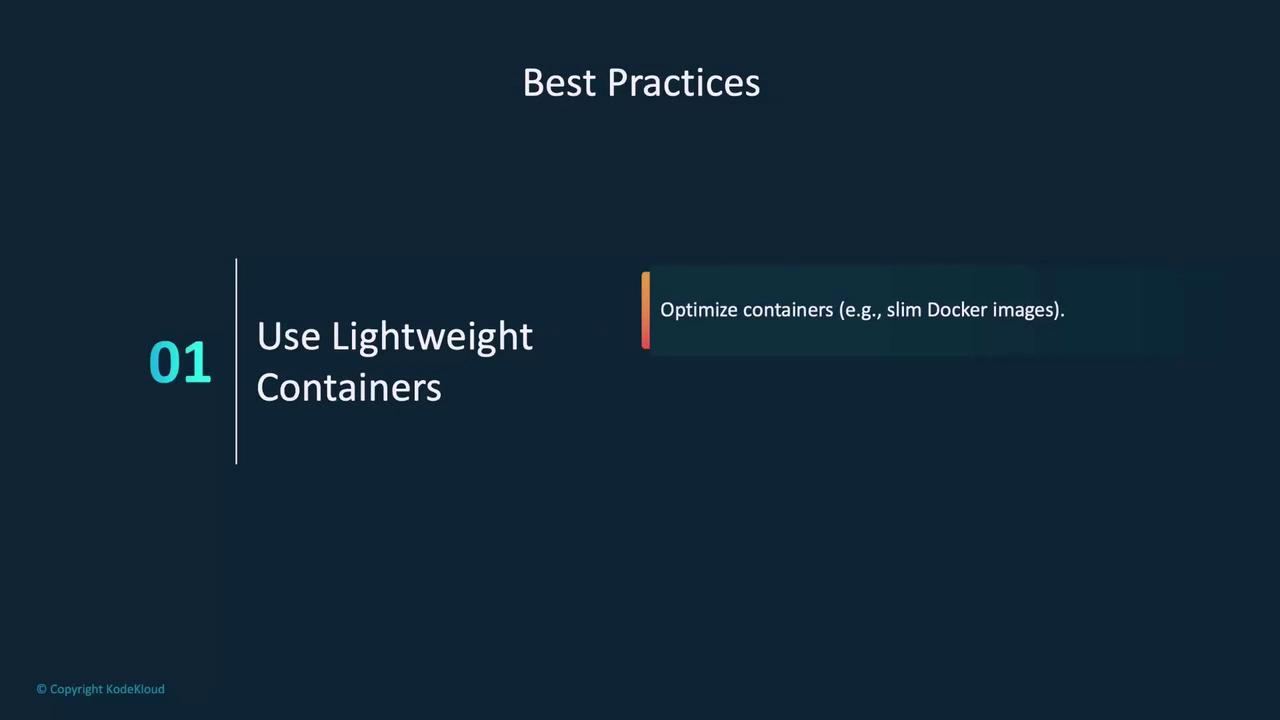
Resource Monitoring:
Leverage monitoring tools like Prometheus and Grafana to track CPU, memory, and GPU usage. Always define resource limits to avoid contention, especially in shared cluster environments.
Rolling Updates:
Employ rolling updates for model deployments to minimize downtime. This approach allows gradual updates and ensures a smooth user experience.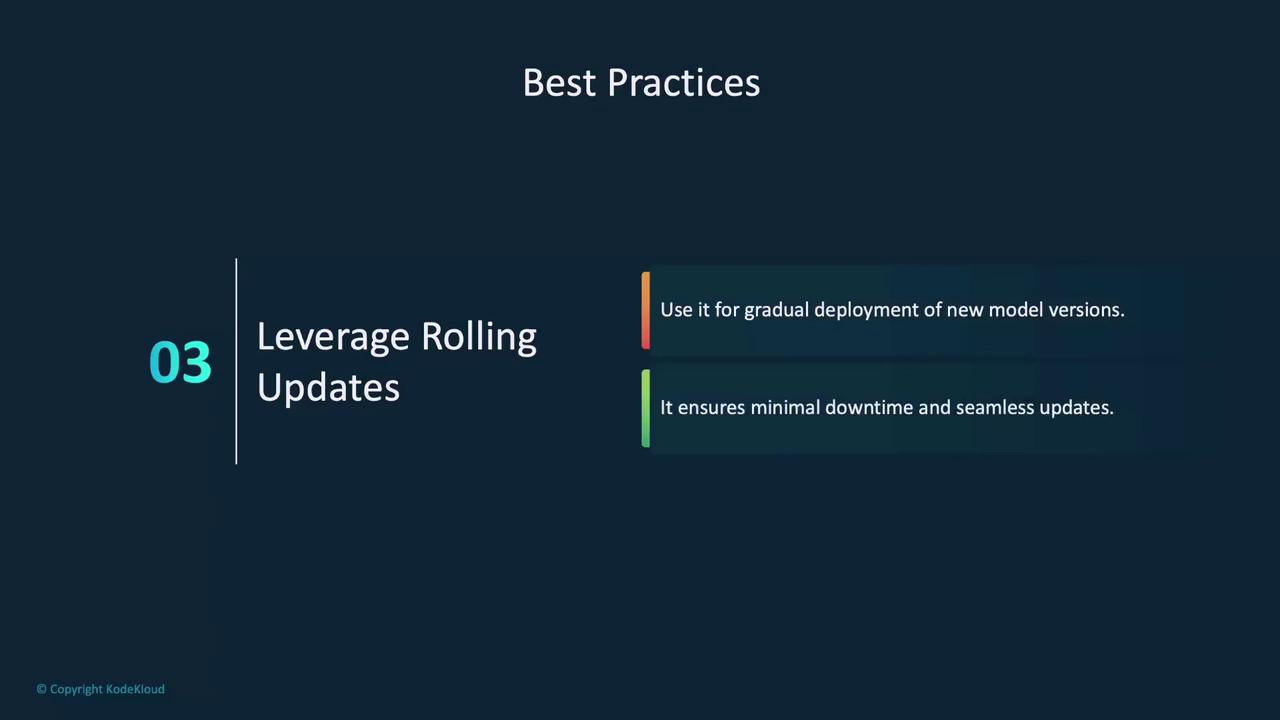
Security Measures:
Implement strict security best practices by using Role-Based Access Control (RBAC) and network policies to restrict permissions for pods. This minimizes unauthorized access risks.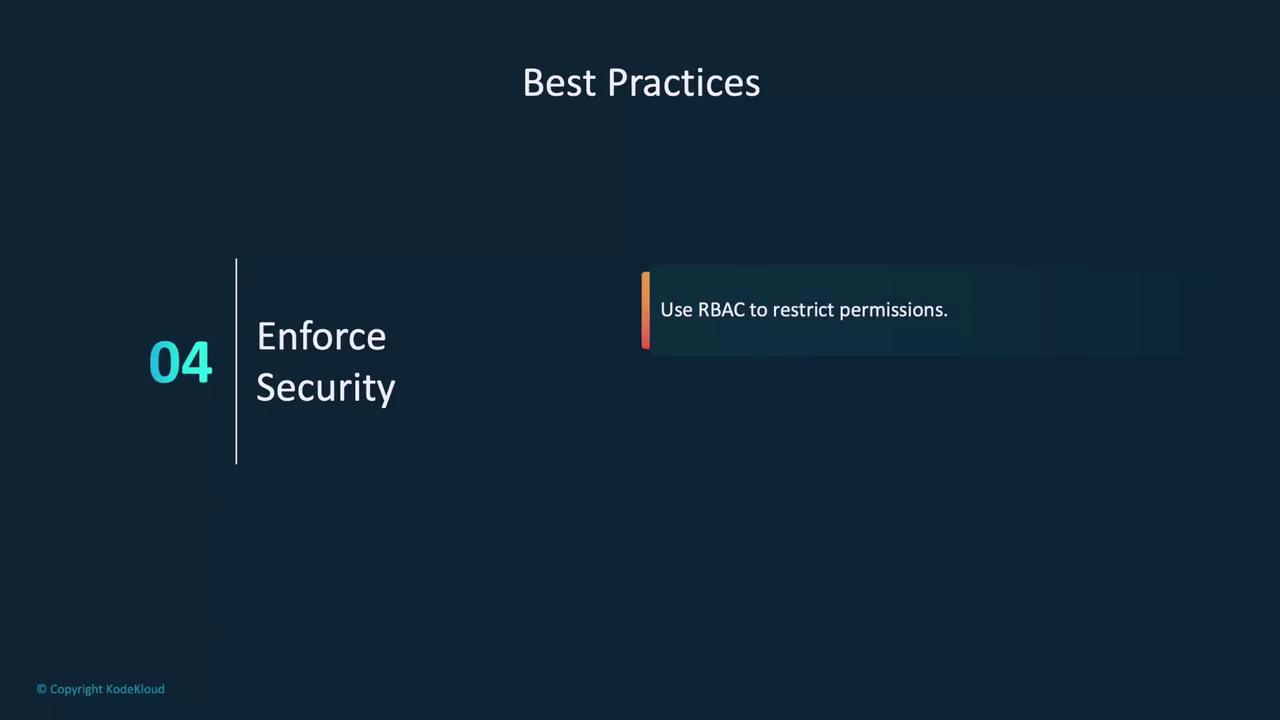
ML Serving Frameworks for Kubernetes
While Kubernetes' native resources (Deployments, Services, etc.) suffice for many model deployments, specialized ML serving frameworks can streamline and enhance the process:
KServe (formerly KFServing):
Specifically designed for serving ML models on Kubernetes, KServe supports advanced features such as explainability and model monitoring, making it perfect for production-grade deployments.Seldon Core:
Offers interoperability for models built on different frameworks. Seldon Core facilitates complex workflows like ensemble models and A/B testing while integrating natively with Kubernetes.Triton Inference Server:
Developed by NVIDIA, Triton provides GPU-accelerated inference and supports dynamic batching across multiple ML frameworks (TensorFlow, PyTorch, ONNX).
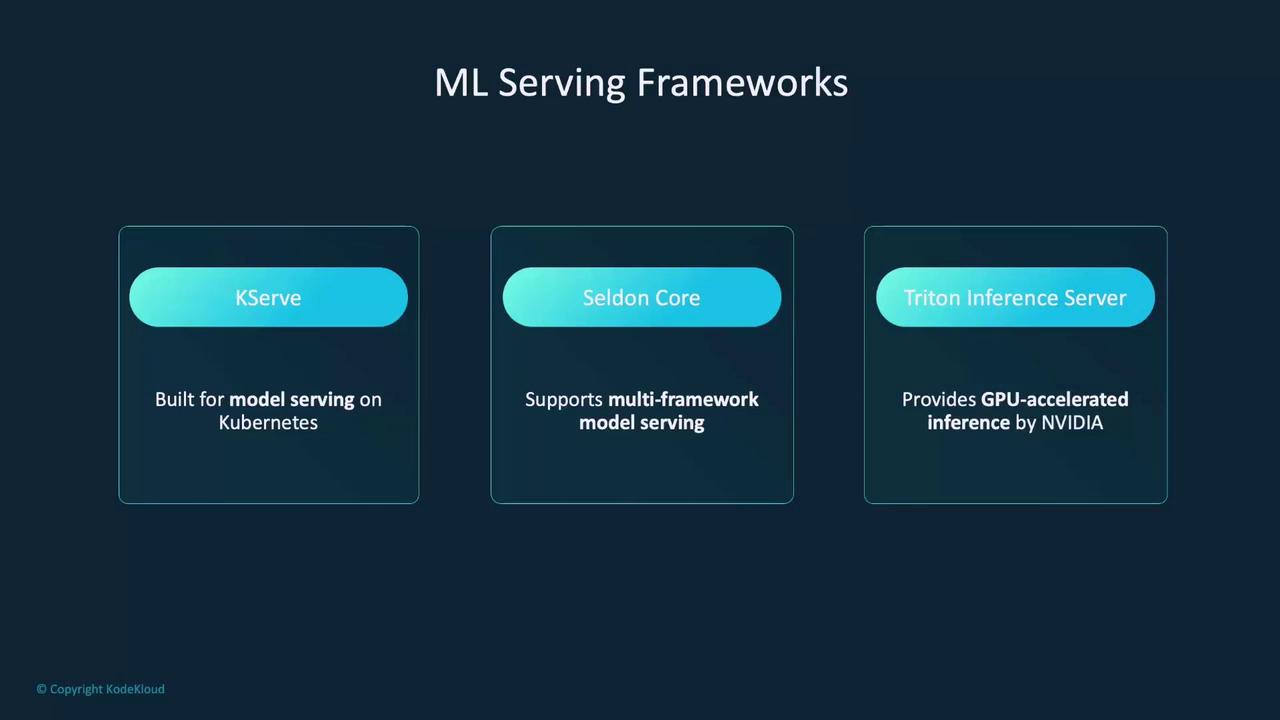
These frameworks also offer crucial capabilities such as model versioning, autoscaling, and integrated logging and monitoring, enabling efficient troubleshooting and management of multiple model versions.
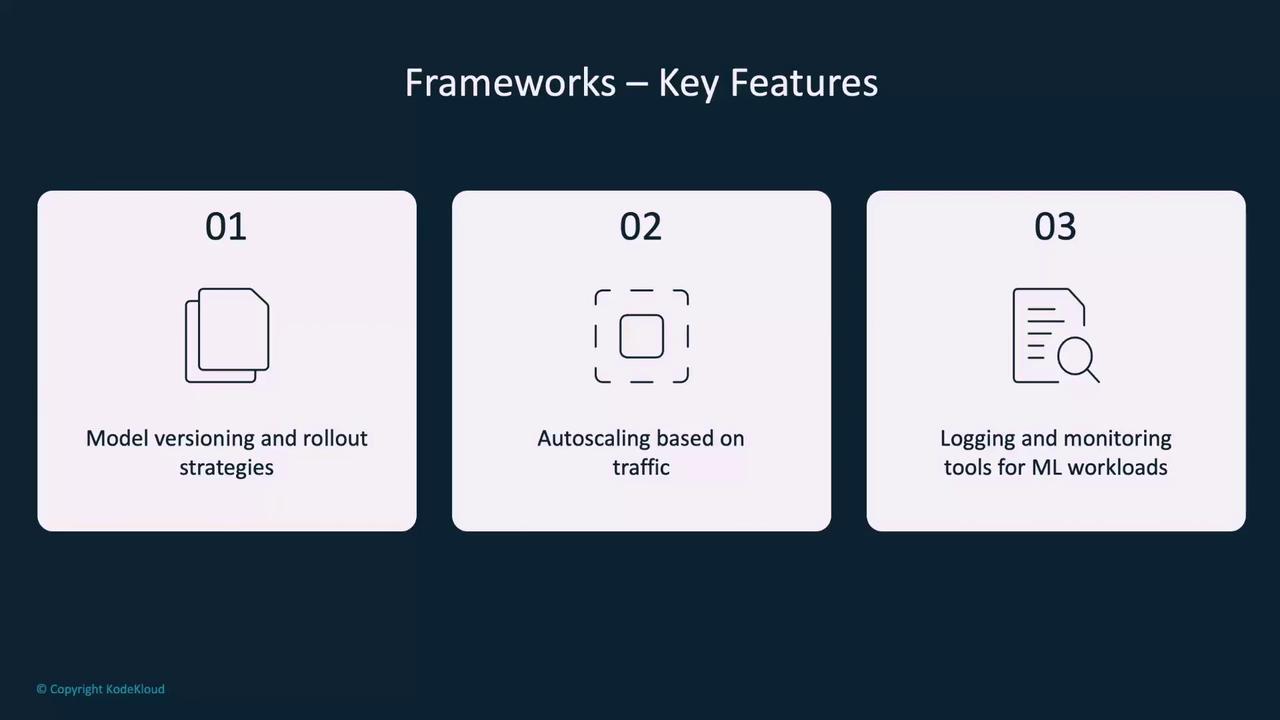
Conclusion
Kubernetes provides a powerful and flexible platform for deploying machine learning models. Its ability to handle scalability, efficiently allocate resources, and adapt to diverse deployment scenarios makes it an excellent choice for modern ML workloads. Key techniques such as utilizing node affinity, applying taints and tolerations, and setting appropriate resource requests and limits simplify the deployment process.
By following best practices—optimizing containers, monitoring resources, employing rolling updates, and enforcing security measures—you can ensure robust and efficient deployments. Additionally, leveraging ML serving frameworks like KServe, Seldon Core, and Triton Inference Server further enhances your deployment capabilities with advanced features like autoscaling, model versioning, and integrated monitoring.
Let's now load up a Kubernetes cluster and deploy our model application using these best practices and real-world strategies.
Watch Video
Watch video content